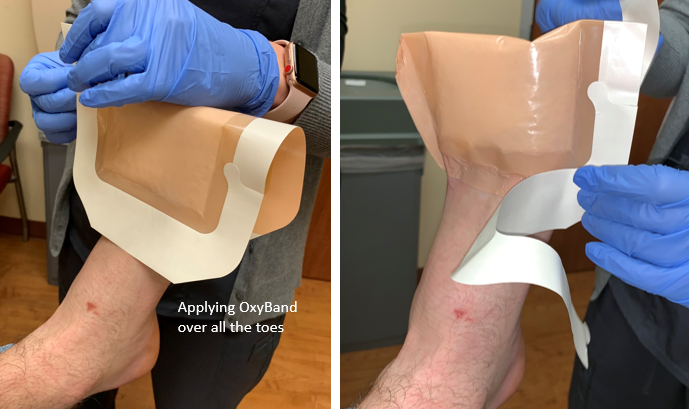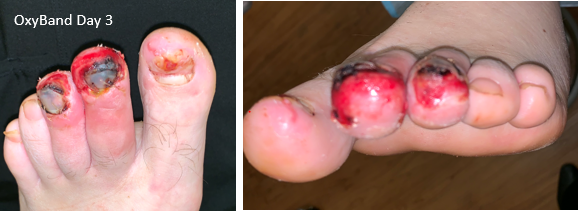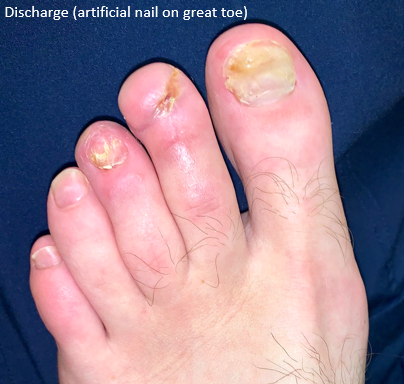I am still exploring the use of transdermal oxygen for certain types of ischemic ulcers. The foot injury depicted in these photos occurred when a training weight fell on a professional athlete’s foot and avulsed the distal ends of the left great, second and third toes. The avulsion was too distal for a microvascular reattachment, but the amount of tissue involved was sufficient to affect running performance without reattachment. The distal toes were reattached using the toenails as splints. His first wound clinic visit was not until 3 weeks after the injury, at which time the distal tips of toes 2 and 3 had normal sensation to pinprick which means the tissue was viable. On the first visit, an OxyBand dressing was placed over the toes in a “tent” fashion. The following photos show the progression of the toes after the placement of the Oxyband.
The most dramatic change was within the first 3 days of OxyBand. At that dressing change, the suture lines on the plantar surface of the toes was no longer visible. Oxyband was stopped after 11 days and the patient received moist wound care for the open nail bed until complete healing. An artificial nail was placed over the great toe to retrain the injured toenail. The distal toes were viable initially so it’s possible the OxyBand did not contribute substantially to the outcome, particularly given the delay to starting it. The toes were visibly less ischemic when the OxyBand dressing was removed. It is intriguing to wonder whether the outcome would have been even better if the OxyBand had been placed immediately after the tips of the toes were reattached.
OxyBand samples were provided free of charge. I have no affiliation with the OxyBand company. For more information about OxyBand, see this website: https://oxyband.com/
–Caroline









Dr. Fife is a world renowned wound care physician dedicated to improving patient outcomes through quality driven care. Please visit my blog at CarolineFifeMD.com and my Youtube channel at https://www.youtube.com/c/carolinefifemd/videos
The opinions, comments, and content expressed or implied in my statements are solely my own and do not necessarily reflect the position or views of Intellicure or any of the boards on which I serve.



Regarding the artificial nail, is there a recommendation on type of adhesive and for how long does it normally need to remain intact. Thank you for this article.